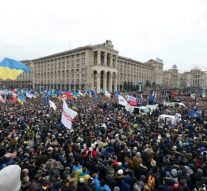
Migration to and from Ukraine
Migration 29 January 2022Estimated time of reading: ~ 3 minutes
This article examines migration to and from Ukraine through the lens of recent crises that have shook the country. When it comes to Ukrainians migrating abroad, the trends are more varied. There is currently no EU-wide statistical data available to explicitly confirm the hypothesis that the pre-war trend in Ukrainian migration to the EU has changed as a result of the military conflict.
However, it should be remembered that in 2014, EU countries received 14,000 applications for refugee status from Ukrainian citizens, with Poland receiving 2,318 of them. These figures do not appear to be alarming. Furthermore, whether the upward trend will continue in 2015 is unknown. There was a significant increase in the number of submitted applications for refugee status between February and April 2015, but a decrease in May and June 2015. Polish data indicating a decrease in the number of applications submitted by Ukrainians since June 2015 could be considered an indication.
It should also be noted that the so-called recognition rate for asylum applications submitted by Ukrainians is relatively low – only 21% in 2014, implying that Ukrainians may abandon this method of entering the EU in the future. Ukrainians seeking international protection can be divided into two groups, each with different migration profiles, according to the European Asylum Support Office (EASO). Individuals fleeing parts of eastern Ukraine that remain outside the control of the central government make up the first group, while those avoiding compulsory military service make up the second.
To determine whether the scale of migration of Ukrainians to the EU increased after the outbreak of the military conflict, one would need to examine not only data on asylum seekers, but also information on the number of residence permits issued to Ukrainian citizens in specific EU countries according to the regions from which these individuals originate (which would help determine whether they come from regions affected by the conflict). So far, no such information has been gathered.
Only aggregate Eurostat data for 2014 is available, showing that 859,000 Ukrainians held residence cards in the EU in that year (in 2013 849,000). The assumption that the war caused an increase in external migration from Ukraine is unquestionably more credible in the case of Russia, which borders the conflict-affected territory and supports separatist rule there. However, Russia’s leadership tends to exaggerate the number of refugees for political reasons; a detailed analysis of available data suggests that approximately 500,000 people from eastern Ukraine have arrived in Russia. Between January 1, 2014, and July 1, 2015, 355,000 Ukrainian citizens applied for so-called temporary refugee status in Russia, according to the Russian Federal Migration Service.
A total of 209,000 people applied for temporary residence permits, 114,000 people signed up for the voluntary resettlement program for ethnic Russians, and 43,000 people applied for permanent residence permits. However, the precise number and type of applications submitted by residents of areas directly affected by the military conflict are unknown. When it comes to possible variables that could influence the dynamics and nature of migration, the economic situation in Ukraine is without a doubt the most important. Although the first signs of economic and social stabilization can be seen, such as the successful re-negotiation of a portion of the country’s external debt or the indexation of salaries and raising of the minimum wage, current trends indicate that full recovery from the crisis will take a long time.
Ukraine’s unemployment rate has been relatively low (approximately 9 percent if calculated according to ILO methodology). This is since state-owned businesses employ an excessive number of people, allowing them to pay low wages. Given the sharp drop in Ukraine’s industrial production, this rate of unemployment is unlikely to be sustained in the long run. Other factors include the conflict’s impact on the security situation in the region and Russia’s policy toward Ukraine. Fighting is still likely to resurface in October 2015 in connection with Ukrainian local elections. Economic deterioration in Russia, as well as announcements by Russia’s leadership that social benefits granted to Ukrainian refugees will cease to be paid out in 2015, should be kept in mind.
Written by: Nenad Stekić
Submitted on: 29.01.2022.


